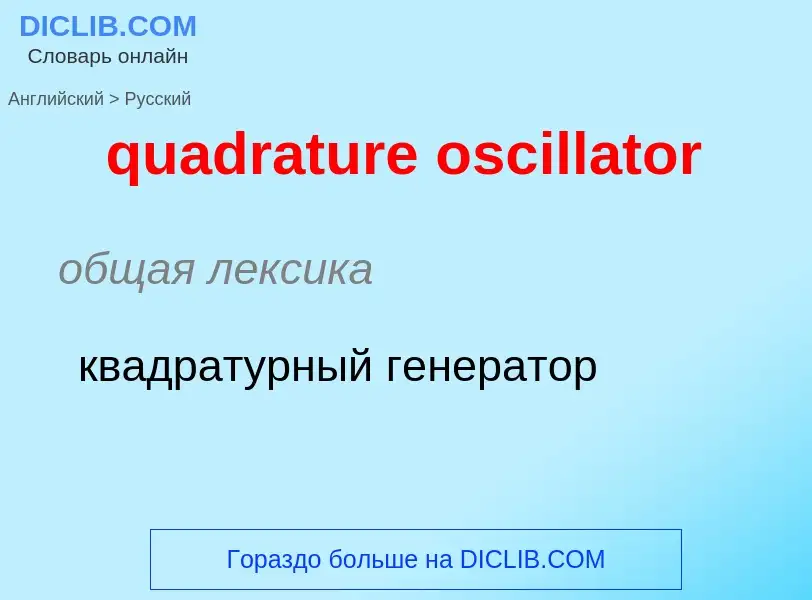Tradução e análise de palavras por inteligência artificial ChatGPT
Nesta página você pode obter uma análise detalhada de uma palavra ou frase, produzida usando a melhor tecnologia de inteligência artificial até o momento:
- como a palavra é usada
- frequência de uso
- é usado com mais frequência na fala oral ou escrita
- opções de tradução de palavras
- exemplos de uso (várias frases com tradução)
- etimologia
quadrature oscillator - tradução para russo
общая лексика
квадратурный генератор
общая лексика
транзитронный генератор
математика
интегральное представление (аналитической функции)
Definição
Wikipédia
In numerical analysis, a quadrature rule is an approximation of the definite integral of a function, usually stated as a weighted sum of function values at specified points within the domain of integration. (See numerical integration for more on quadrature rules.) An n-point Gaussian quadrature rule, named after Carl Friedrich Gauss, is a quadrature rule constructed to yield an exact result for polynomials of degree 2n − 1 or less by a suitable choice of the nodes xi and weights wi for i = 1, …, n. The modern formulation using orthogonal polynomials was developed by Carl Gustav Jacobi in 1826. The most common domain of integration for such a rule is taken as [−1, 1], so the rule is stated as
which is exact for polynomials of degree 2n − 1 or less. This exact rule is known as the Gauss-Legendre quadrature rule. The quadrature rule will only be an accurate approximation to the integral above if f (x) is well-approximated by a polynomial of degree 2n − 1 or less on [−1, 1].
The Gauss-Legendre quadrature rule is not typically used for integrable functions with endpoint singularities. Instead, if the integrand can be written as
where g(x) is well-approximated by a low-degree polynomial, then alternative nodes xi' and weights wi' will usually give more accurate quadrature rules. These are known as Gauss-Jacobi quadrature rules, i.e.,
Common weights include (Chebyshev–Gauss) and . One may also want to integrate over semi-infinite (Gauss-Laguerre quadrature) and infinite intervals (Gauss–Hermite quadrature).
It can be shown (see Press, et al., or Stoer and Bulirsch) that the quadrature nodes xi are the roots of a polynomial belonging to a class of orthogonal polynomials (the class orthogonal with respect to a weighted inner-product). This is a key observation for computing Gauss quadrature nodes and weights.


